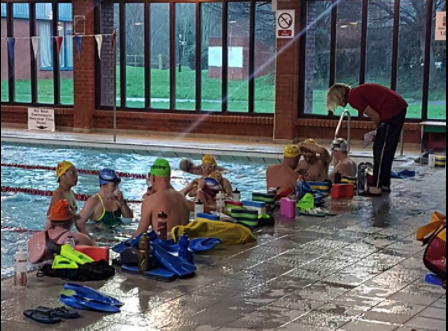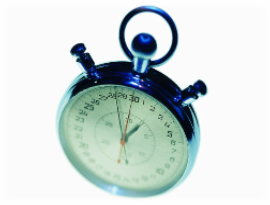
Farnhamtri

Times and Venues
The club holds two training sessions per week at Farnham Leisure Centre and one training session per week at Aldershot Garrison Sports Centre (AGSC). The times are as follows:
Day | Time | Location | |
Tuesdays | 7:30pm to 8:30pm | 50m pool, Aldershot Garrison Sports Centre | |
Sundays | 7:30am to 8:30am | 25m pool, Farnham Leisure Centre |
The cost is £6.00 per session booked through ClubSpark All sessions are covered by a qualified lifeguard and insured through the Club’s TE insurance. Each swim includes a structured session to cover all abilities. The sessions vary depending on the season but normally involve sprints, longer swims and stroke work.
Please note that the AGSC facility is owned by the Ministry of Defence and as such regular users are required to obtain associate membership, available at the main reception, at a cost of £2.00 per annum. (For the location of AGSC click here).
Lane Discipline
By following a few simple rules the chances of accidents are reduced. To enable a swim session to proceed smoothly swimmers should be aware of the following:
- Note which way round your lane is to swim, i.e. clockwise or anticlockwise. You should not be going in the opposite direction to the swimmers on the other side of the rope in the next lane. The lanes are organised alternatively in terms of direction of swim. At Farnham, lanes 1, 3 and 5 are clockwise and 2, 4 and 6 are anti-
clockwise. - You should swim in a lane with people roughly the same speed as you. If they are going too fast or too slow move down or up a lane accordingly. Don’t put yourself at the front of the lane if there are other faster swimmers who can maintain the required pace more consistently than you.
- At the end of the pool do not stand in the way of incoming swimmers.
- Do not sit on the lane ropes.
- Do not swim down the black line in the middle of the lane, keep to the side of the lanes except when overtaking.
- Don’t swim on another swimmer’s feet. Set off with at least 5 seconds gap between you.
- Make sure it is safe before trying to overtake and that no-
one is heading towards you. Check that you are going fast enough to overtake safely. If you want to overtake then you should tap the swimmer’s feet in front of you lightly and they will move out of the way when it is safe to do so (usually at the end of the pool). - Turning can be a dangerous manoeuvre. Give yourself enough of a gap between swimmers so that you can go into and out of a turn without hitting another swimmer. Come out of the turn at the ‘new’ side of the lane, not down the centre where you will hit others.
- Think about your swim technique. Not only will this prevent long term injury to yourself, but flaying arms are dangerous to others. If you keep streamlined in your stroke and don’t fight the water, everyone will benefit.
- Note which way round your lane is to swim, i.e. clockwise or anticlockwise. You should not be going in the opposite direction to the swimmers on the other side of the rope in the next lane. The lanes are organised alternatively in terms of direction of swim. At Farnham, lanes 1, 3 and 5 are clockwise and 2, 4 and 6 are anti-


Training Tips
The Warm Up: As most people get into the pool ‘cold’ then there is a need to warm up the body, i.e. to loosen up the muscles. The warm up is the place to gently prepare the body for the hard training to come, not the place to set a personal best for 400 metres. Try and use several different strokes, arms only or catch up rather than just one stroke.
The Clock: Learn to swim using the timing clock at each end of the pool. This helps you to judge your pace and therefore your fitness. During most sessions quite a few elements of a set will include a given time or rest period. Try to stick to these. They are designed to improve your swimming by making you work for a defined period. Rather than ignore the times if you find it difficult to keep up trying doing fewer repetitions in each set but within the time limits. Where a timed swim is included try and keep a record of your times so that you can identify improvements, or slower times.
Whether doing timed swims, sprints or drills it is important to give the person in front of you a 5 second gap. This means that you will have to work harder as you will not be drafting directly behind the swimmer in front. It also makes swimming safer as each swimmer has time and space to turn at the end of the pool rather than collide.
Stroke Work: You may feel that doing chicken wings or catch up seems pointless because you will never use this stroke in a race. Drills are important in developing the efficiency of your main stroke and your stamina in the water. It is important to slow down your stroke, not race, so that you can watch (and feel) what you are doing. Concentrate on hand entry, then pull and control, the breathing pattern. Practice breathing both sides and keeping your head up. Kicking should be practised as a movement from the hips and not just the knees. When you are using a kickboard or floats do not put your face in the water, keep your head up and breath more easily and relax.
Other Strokes: These are included partly to break up the monotony of swim training and partly because they help with developing flexibility, strength and confidence in the water. If you cannot complete all of the medley (butterfly usually causes the most problems) then substitute another stroke instead. You never know when you might have to change your stroke in a race to see where you are going or recover goggles if they get knocked off.